Original text by Marina Belova
Yesterday I suddenly arrived at the idea that it was impossible to make the eyelets for all the towels in the house. Yet I'd like my towels to hang, even on the hooks that are poorly adapted for use, and don't drop down. So I searched the Embroidery Library and found this method. The idea is so simple that it is ingenious — to embroider a towel topper specifically for the purpose: it is the thing that can hold your towels.
My first sample, a test piece, turned out to be not so good-looking, but a functional one:
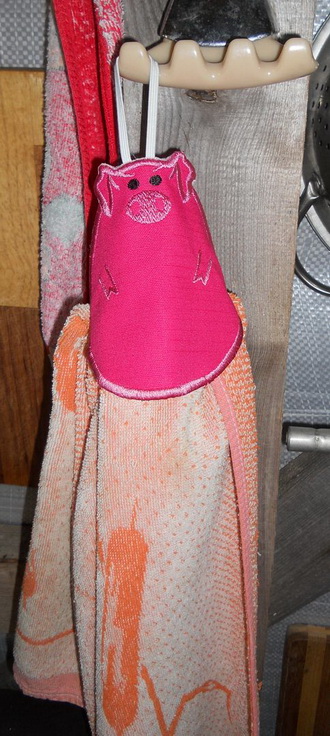
For I decided not to overcomplicate things and not to pay extra attention to the design, as I now have little time for embroidery. The design, as usual, is a series of stops and color changes, for it is a double-faced applique, so it looks like that:
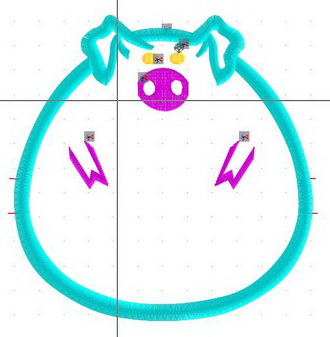
Now it is time to embroider. I hoop the tear-away stabilizer:
Insert the hoop into my machine and stitch the outline for positioning of the fabric:
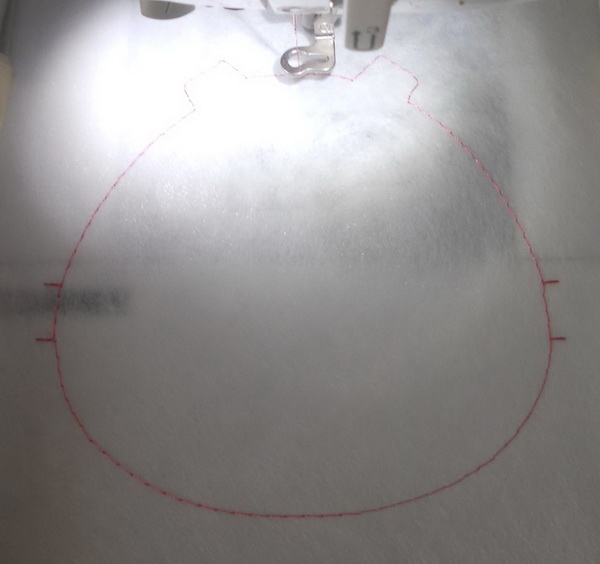
I put the fabric next, having sprayed it with temporary spray adhesive prior to that:

I start the machine and embroider the second stitch — a zig-zag one, which I'll later use as a guideline for trimming of the applique on the right side of the embroidery:
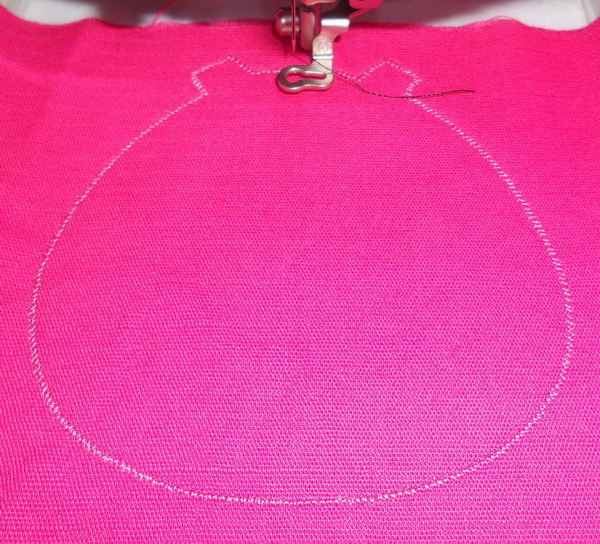
After that I can take the hoop off the machine and trim all of the extra fabric:
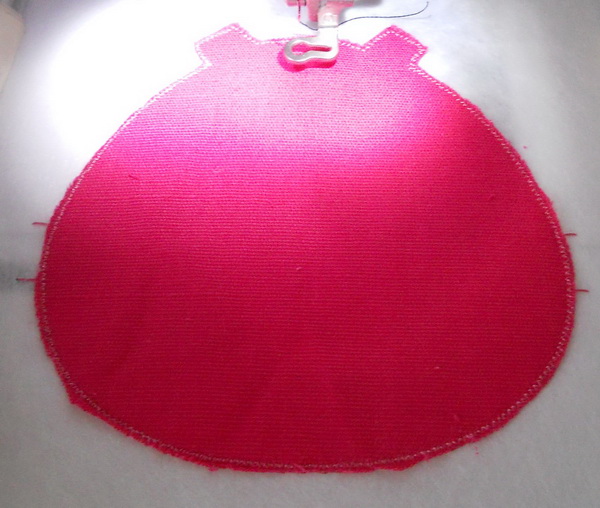
You can also embroider everything you want on the right side and cut the fabric later, before attending to the wrong side of the embroidery: in that way you'll have less work to do. This is extremely important as I cannot get used to the way the hoop is attached to my home embroidery machine.
After that I embroider a simple design with the pig's snout:
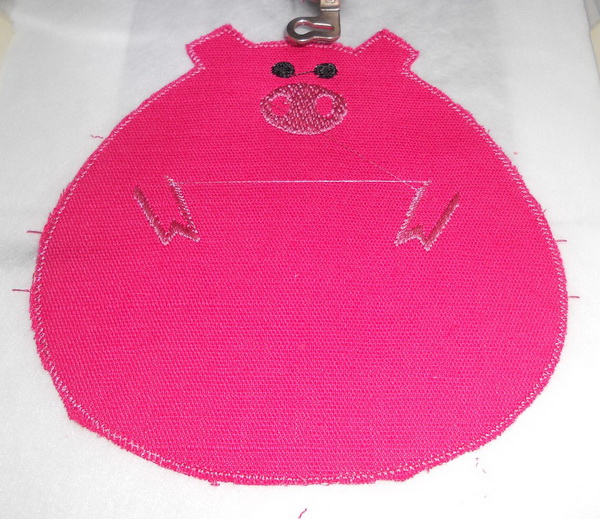
Now it's time to take the hoop off again, turn it the wrong side up and attach an eyelet to the top of the pig's head using an adhesive tape. Like that:
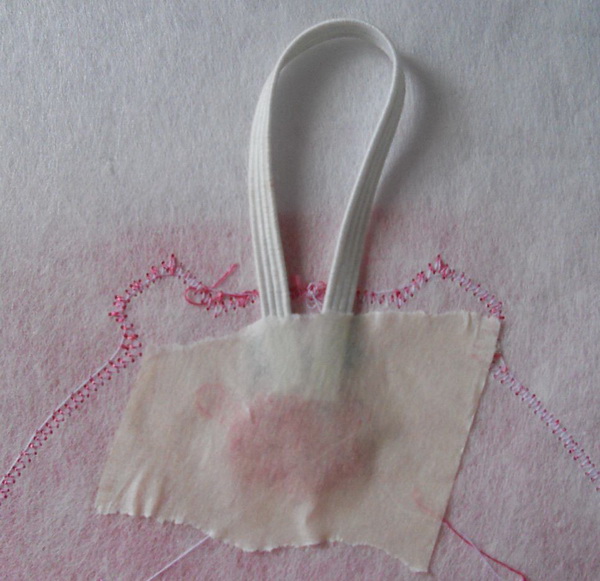
I made an eyelet out of an ordinary elastic, for I had nothing else. But after having used the result for a while I arrived at the conclusion that a non-stretchy woven ribbon would be better for an eyelet.
Then I attached the fabric I'd prepared for the back side of my pig to the wrong side of embroidery:
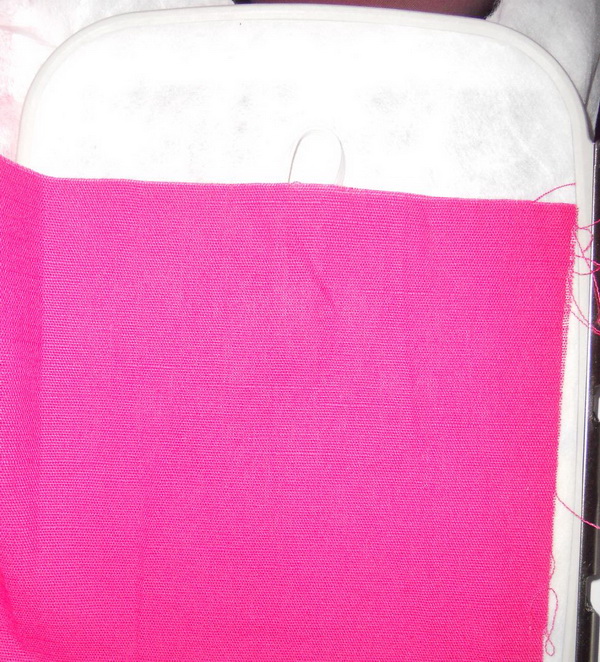
And put the hoop back into the machine. I added one more elastic across the pig's belly with an adhesive tape, having stretched it slightly:
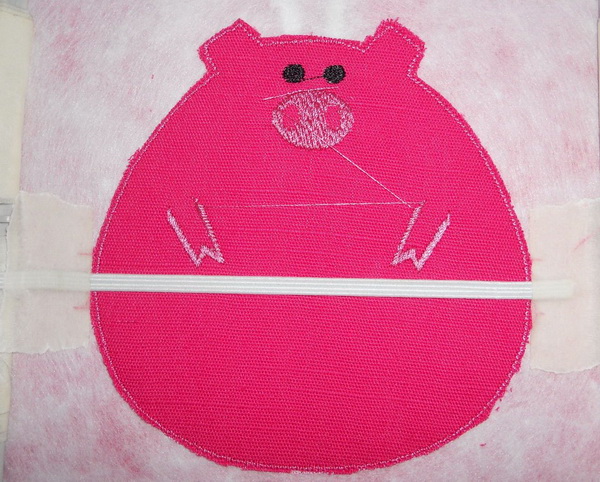
I start the machine and sew all these layers with a zig-zag stitch, along which I later trim the elastic on the right side of the embroidery:
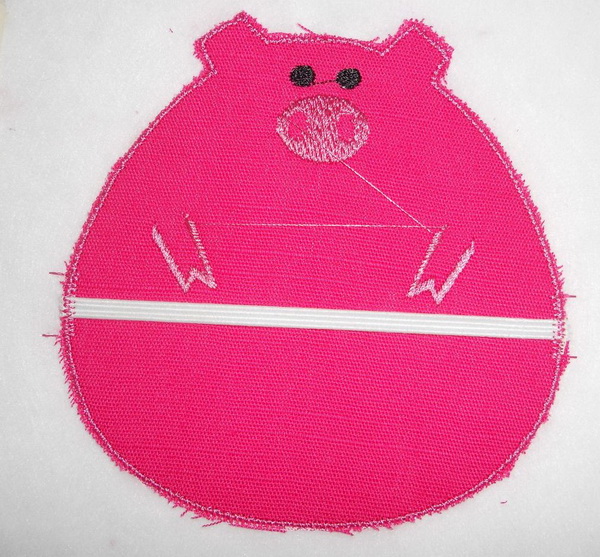
I also trim the leftover pieces of fabric on the wrong side:
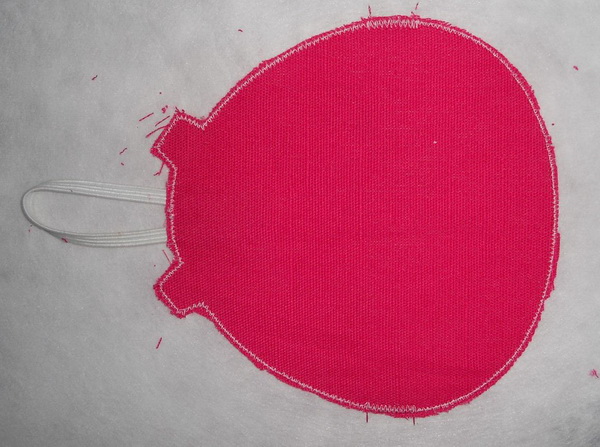
All that is left is to embroider the finishing satin stitch border. Before resuming the embroidery, change an ordinary bobbin thread so that it is the same color as the upper thread:
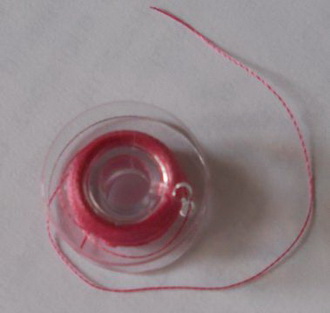
Embroider the finishing border:
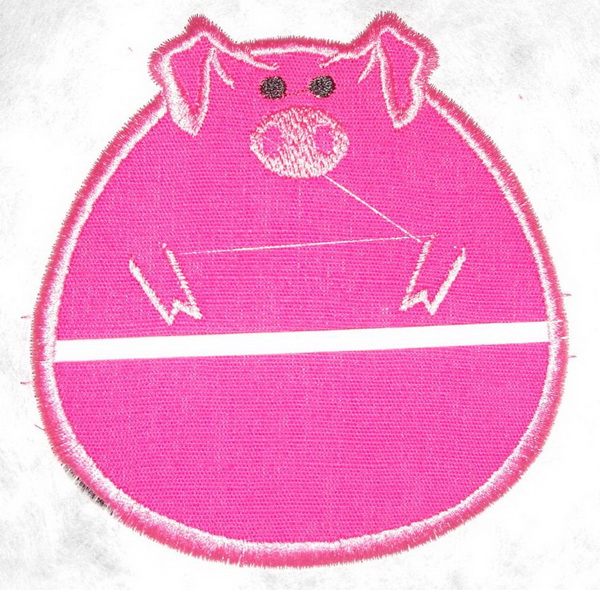
Detach the embroidery from the stabilizer:
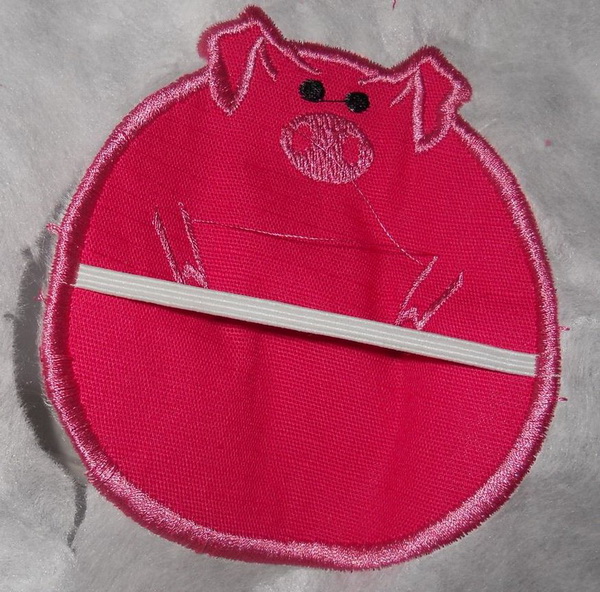
Then remove jump stitches, singe the fibers of the stabilizer, and everything is ready. You can use it now. I rotated the elastic across the pig's belly so that it was on it's back. Though you could insert towels at the front side, too.
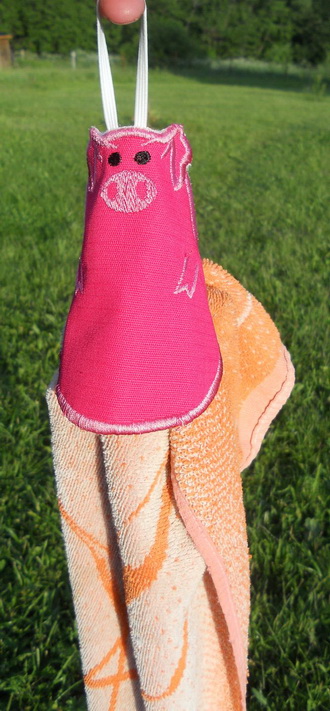
The back side:
Summary may be as follows:
- It's better to use non-stretchy materials for eyelets and tower toppers, such as woven ribbons or similar things.
- The elastic is better to be located on the wrong side.
- In order for the fabric to maintain its shape, it is advisable to secure it with the fusible interfacing used in sewing. Or just pick the thicker stabilizer.
- The size of my embroidery was 12,5х13,5 cm. But you can reduce it to 10х10, and it will look better.
- You can choose from a huge variety of designs, including the ones with names, which will come quite handy in a large family.
- My machine struggled over so many layers of fabric + elastics. As for commercial embroidery machines, I've never noticed any such troubles on them.

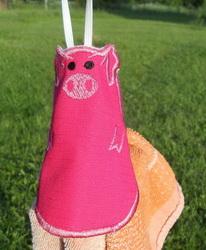
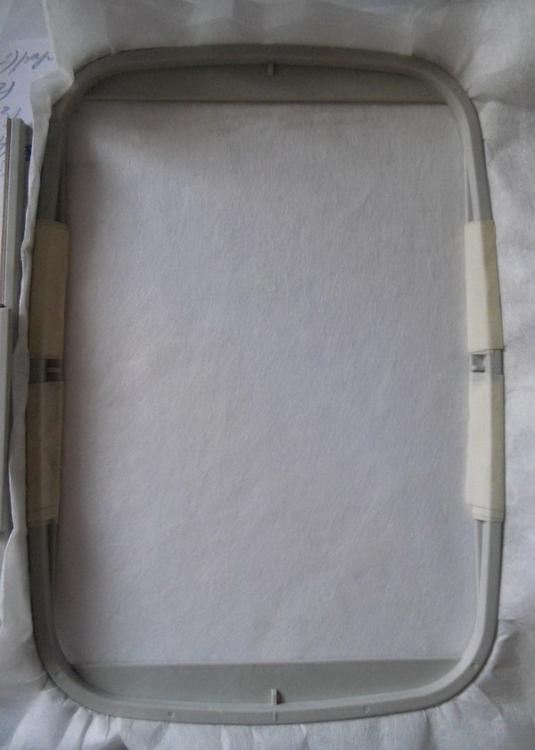
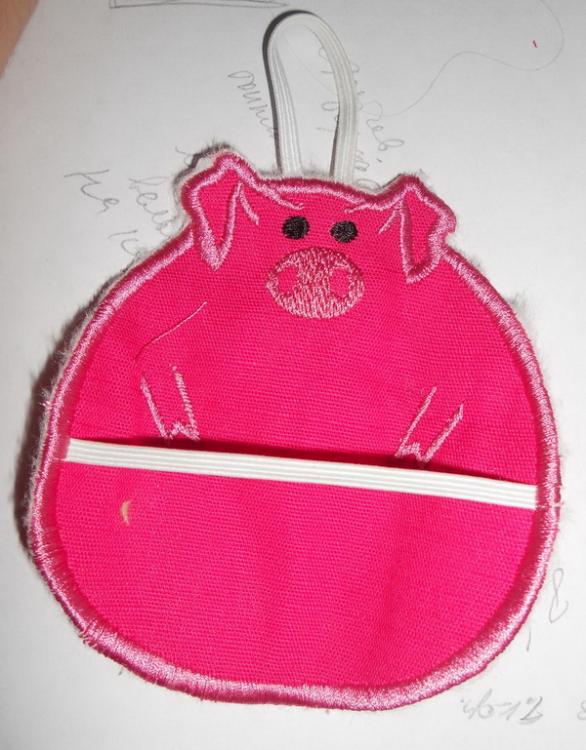


There are no reviews to display.